TSUKUBA FUTURE
#023 Delicious, No Waste, Healthy! Ingenious Food Processing Scheme
Professor KITAMURA Yutaka, Faculty of Life and Environmental Sciences

A few years ago, there was something of a boom in rice flour. As a substitute for wheat, rice flour offered a glutinous texture that made it popular for use in making products such as breads, noodles, and cakes. However, because it was more difficult to cook with than wheat, and more costly, rice flour never reached the point of broad, mainstream use. Prof. Yutaka Kitamura wondered if there might not be alternative methods of processing rice other than pulverization into rice flour.
Because raw rice is hard, he was not very keen on milling it up as is. So he tried soaking it in water first to soften it up some, before grinding it up using a stone mill. He discovered that the result was a smooth liquid. If the same is done to brown rice, a material containing even more nutrients can be created. The benefits of brown rice are well known, but it is not a food that people find easy to eat, given the hassle involved in cooking it, and its distinctive flavor and coarse texture. However, when this method is used, brown rice can be processed in the same way as milk.
Stone mills are food preparation tools that have been around since ancient times, and are used to physically crush dried foods and pulverize them into powder. Even today, they are used to grind buckwheat flour and green tea. Secrets are said to have been handed down over time with regard to grinding methods, stone materials, and the groove patterns used on the surface of the mill. However, these have virtually never been the subject of scientific research. When Prof. Kitamura tried to apply the traditional technologies of stone milling to process rice, he consulted with a specialized manufacturer in the city of Kesennuma. This resulted in the creation of a prototype of a custom wet milling machine. It is the only stone mill in the world suitable for liquefied food materials, the micro wet milling machine.
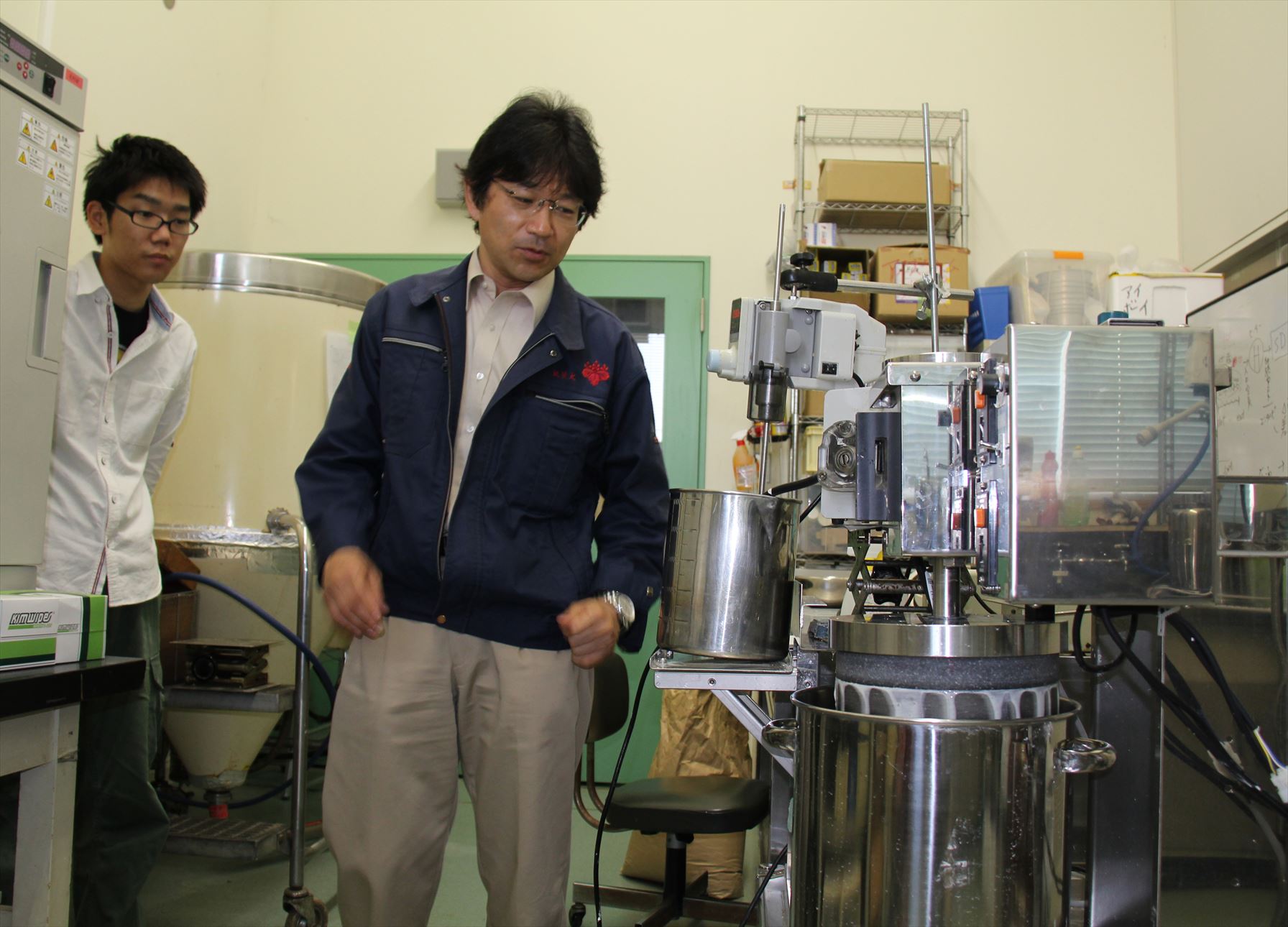
Professor Kitamura (right) and his graduate student Masaru Koyama are working the micro wet milling machine.
Using this original mill, the team attempted the liquid processing of brown rice. The type of brown rice used was a variety originally developed for use as livestock feed. The flavor does not stand up to branded rice like Koshihikari, but it has the advantages of high protein and fat content, high nutritional value, and good yields. This is a feed rice whose production is being promoted for a new business that can compensate for reduced rice acreage, but it is also suitable as a material for processed food products for human consumption. Soaking the brown rice in water, pre-grinding it, and then milling it with water creates a milk-like white liquid called "rice slurry." This is a groundbreaking technique that makes it possible to pulverize and liquefy food materials down to micro-sized granules without the destruction of their nutritional content. This is done by adjusting the amount of water added and the rotational speed of the mill. Also, because the rice is sterilized before use, the slurry can be consumed as is. It is very smooth and has the distinctive aroma of brown rice. Prof. Kitamura reports that a pudding made using this ingredient will soon appear on the market.
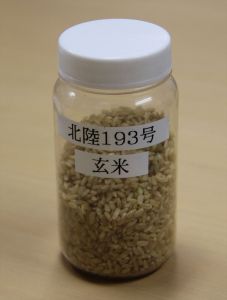
Brown rice...
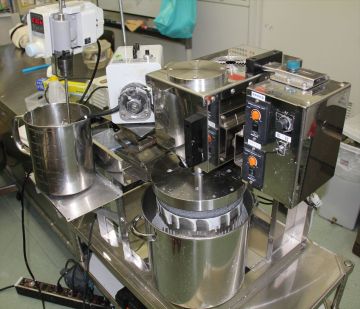
...is turned into rice slurry in this machine (mill).
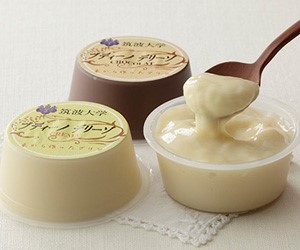
After further processing, it is used to create a delicious rice pudding.
Prof. Kitamura does not just process those parts of the foods that are usually consumed. Rather, he processes the skin, hulls, seeds, and other parts that aren't normally eaten, as well as the parts that are normally removed after processing, such as strained out pulpy residues. These are the parts that contain a lot of nutrients and functional properties and he is researching methods of using these parts rather than letting them go to waste. He has a never-ending supply of items that can be studied, including orange peels, yuzu citrus seeds, and soybean hypocotyl. Recently, there has been growing demand for foods and supplements that contain ingredients such as polyphenols that are deemed to promote health or enhance beauty. He is making efforts to develop technologies for processing these kinds of ingredients into product formats that can be more easily consumed. So far, his research has resulted in powders and tablets, as well as a variety of trial products such as ice cream, wine, and tea. Some of these have even been sold at the university fair.
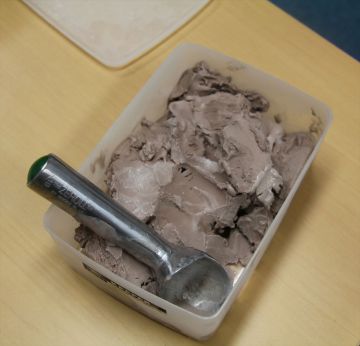
Mulberry ice cream. Mulberries contain more polyphenols than blueberries.
As a student, Prof. Kitamura studied biomass. Although he was working with agricultural products, his research at that time focused on inedible items. After graduating, inspired by his involvement in research and education related to making dairy products such as powdered milk, butter, and cheese, he began moving toward research on food product processing. Since then, he has largely focused on agricultural produce and dairy products, with studies ranging from sweets and sake to herbal medicines.
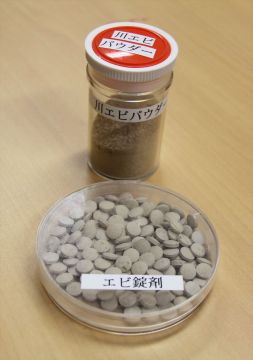
Powder and tablets made using whole freshwater shrimp caught in Lake Kasumigaura.
Processing foods is not just a matter of changing the shape of the food or improving its ability to be preserved, but about delivering food to greater numbers of people by increasing variety and improving palatability. To do this, many different tests must be conducted on flavor, quality, and safety, of course, but also on low temperature drying methods for preventing the breakdown of active ingredients through heating, refinement technologies for improving mouth feel, and processes that allow mass production using less energy. It is impossible to completely prevent the alteration and reduction of ingredients, but foods can at least be made more delicious by processing. There is no shortage of ideas for how to create high added-value food products without sacrificing all of the inherent flavor of whole foods.
Article by Science Communicator at the Office of Public Relations


